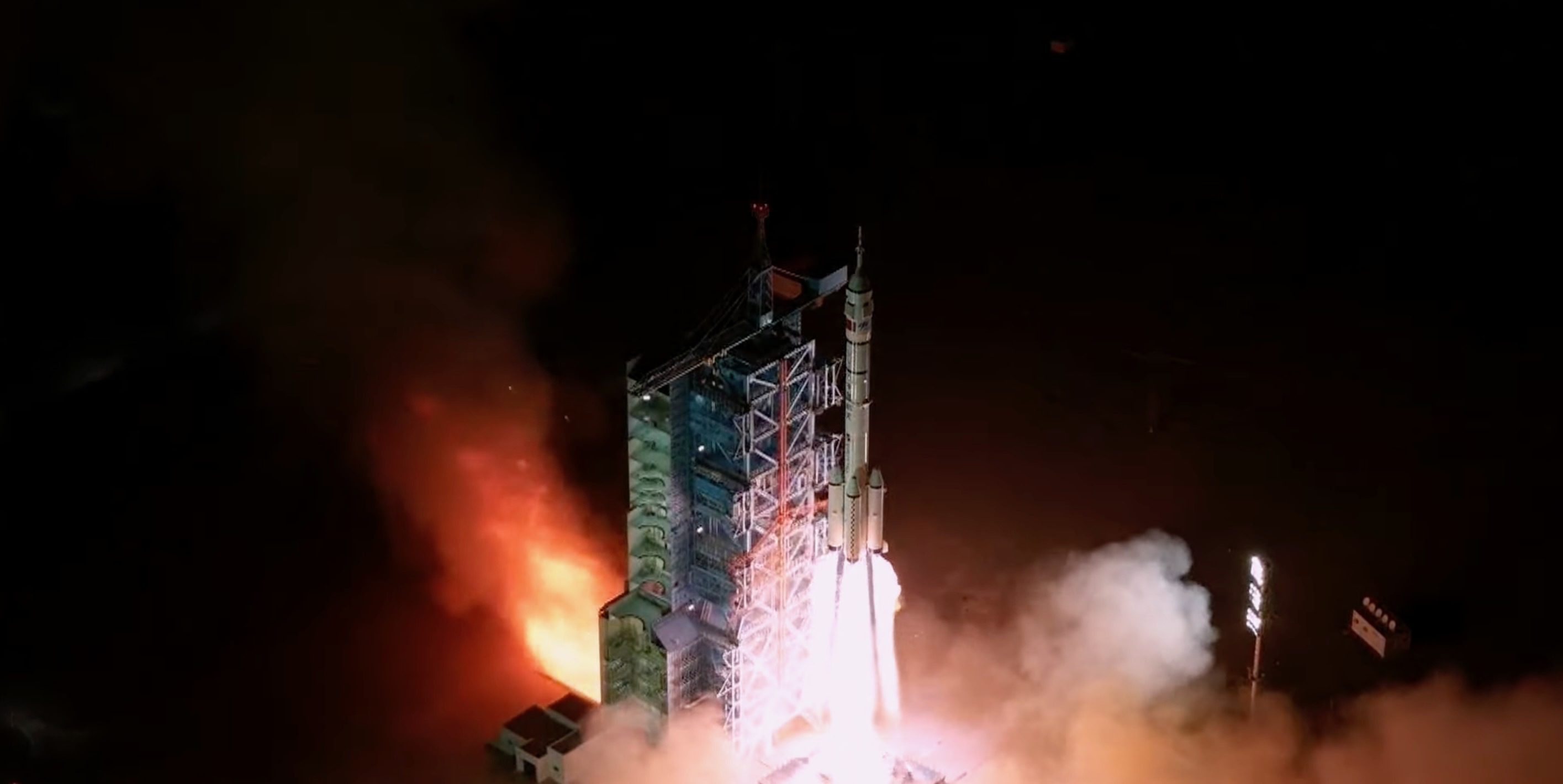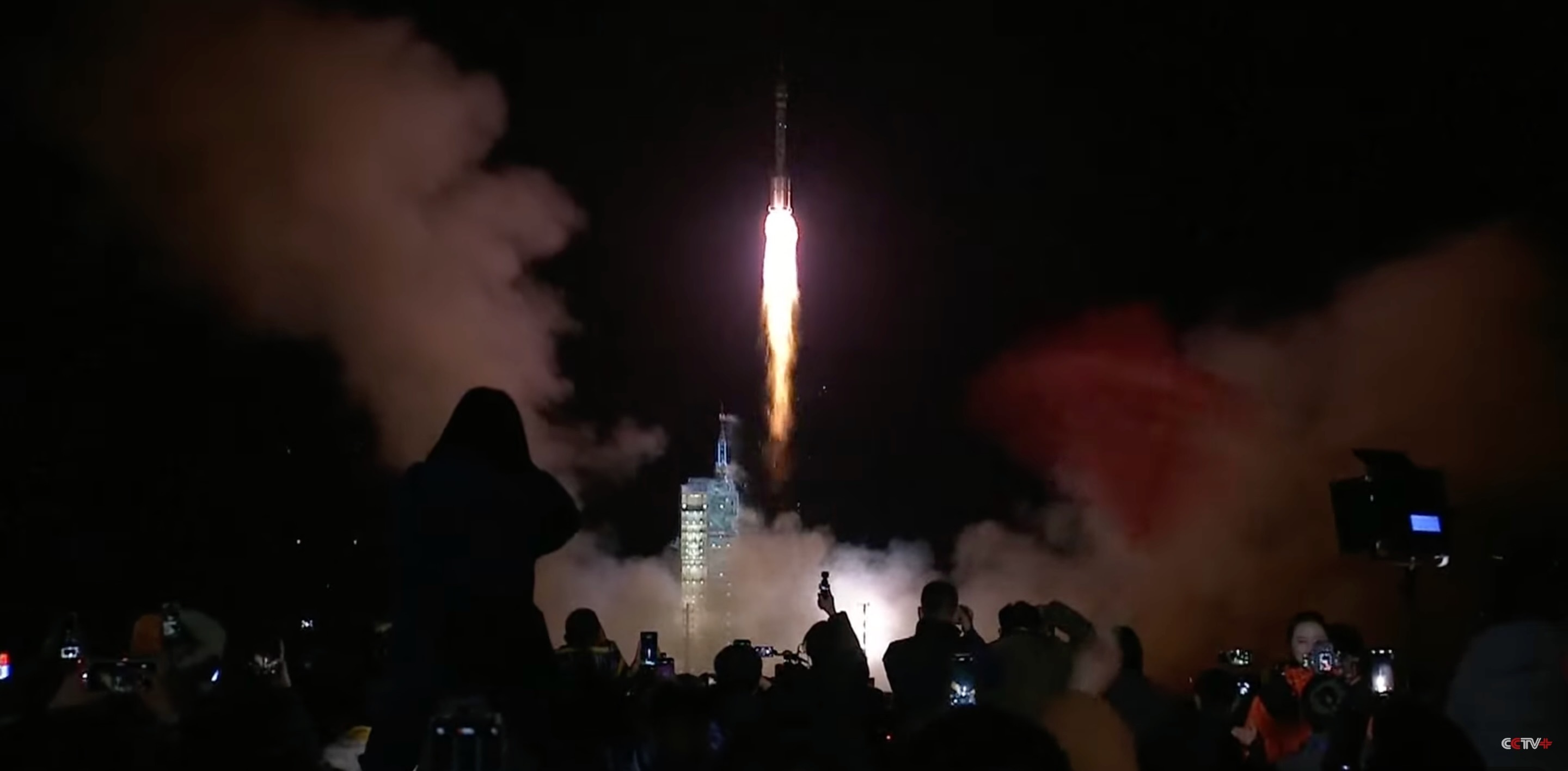China launches Shenzhou 21 astronauts to Tiangong space station for a 6-month stay (video)
Shenzhou 21 lifted off at 11:44 a.m. EDT on Friday (Oct. 31).
China's latest crewed mission made it to the Tiangong space station after a Friday (Oct. 31) launch from the Gobi Desert.
A Long March 2F rocket topped with the Shenzhou 21 spacecraft lifted off from the Jiuquan Satellite Launch Center in northwest China Friday at 11:44 a.m. EDT (1544 GMT, or 11:44 p.m. Beijing time).
The spacecraft docked with the front port of the Tianhe core module of the Tiangong space station on schedule around 3.5 hours after liftoff, adopting a fast automated rendezvous and docking mode that shaves around three hours off the time for the Shenzhou 20 mission.

Shenzhou 21 is carrying commander Zhang Lu, 48, a veteran of the 2022 Shenzhou 15 mission, and two rookie astronauts, Wu Fei and Zhang Hongzhang, who were chosen from China's third batch of astronauts, selected in 2020.
"After two years, being able to once again represent my country and carry out the Shenzhou 21 mission fills me with excitement and anticipation;” Zhang Lu told reporters at a press conference at Jiuquan on Thursday (Oct. 30).

At 32 years old, Wu is the youngest member of China's astronaut corps, and was an engineer at the China Academy of Space Technology (CAST). Zhang, 39, is a payload specialist and a researcher at the Dalian Institute of Chemical Physics under the Chinese Academy of Sciences (CAS).
Zhang Lu and his crewmates were greeted aboard the three-module Tiangong space station by Chen Dong, commander of the Shenzhou 20 mission, and his two crewmates, Chen Zhongrui and Wang Jie.
Breaking space news, the latest updates on rocket launches, skywatching events and more!
Chen Dong recently became the first Chinese astronaut to accumulate 400 days in orbit, but he and his crew will soon depart Tiangong; they're scheduled to touch down back on Earth on Nov. 3. Shenzhou 20 launched on April 24.
Shenzhou 21 is also carrying six types of experimental samples and four black mice for experiments related to reproduction in low Earth orbit. The robotic Tianzhou 10 cargo spacecraft is also scheduled to arrive at Tiangong during the six-month-long Shenzhou 21 mission.
The Shenzhou spacecraft is similar to, but also slightly larger than, Russia's Soyuz crew spacecraft. China is also developing the Mengzhou crew spacecraft, which will not only be partially reusable and serve Tiangong but also be capable of sending astronauts to the moon.
China has now launched 16 crewed missions. Shenzhou 21 is the 10th astronaut flight to Tiangong and the seventh since the completion of the three-module orbital outpost in late 2022.
The country aims to keep Tiangong, which is about 20% as massive as the International Space Station, permanently inhabited for at least a decade. China is also planning to expand the space station with new modules and considering opening the outpost to commercial activities.
Editor's note: This story was updated at 7:05 p.m. ET on Oct. 31 with news of Shenzhou 21's successful docking with the Tiangong space station.

Andrew is a freelance space journalist with a focus on reporting on China's rapidly growing space sector. He began writing for Space.com in 2019 and writes for SpaceNews, IEEE Spectrum, National Geographic, Sky & Telescope, New Scientist and others. Andrew first caught the space bug when, as a youngster, he saw Voyager images of other worlds in our solar system for the first time. Away from space, Andrew enjoys trail running in the forests of Finland. You can follow him on Twitter @AJ_FI.
You must confirm your public display name before commenting
Please logout and then login again, you will then be prompted to enter your display name.
